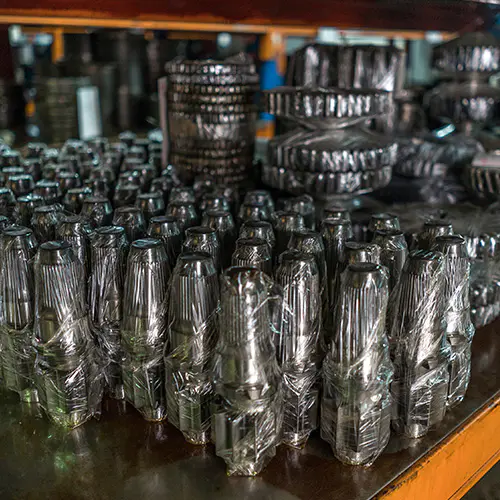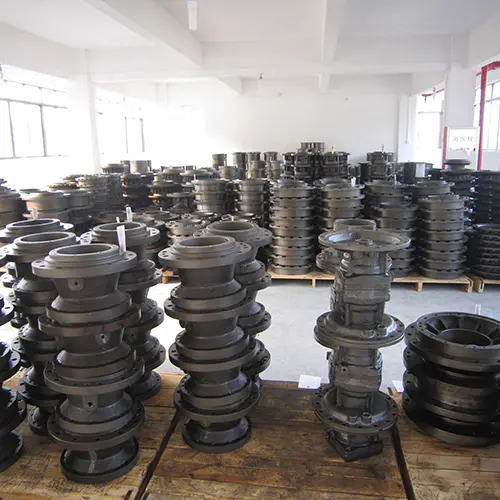What is Final Drive Gear Ratio?
In the intricate world of mechanical engineering, particularly in the automotive and heavy machinery sectors, the concept of the final drive gear ratio is a cornerstone of functionality and performance. often referred to simply as the final drive ratio, plays a crucial role in determining the performance characteristics of vehicles and machinery. Understanding the final drive gear ratio is essential for anyone involved in the design, maintenance, or operation of vehicles and equipment. This article delves into the nuances of the final drive, its gear ratio, and its significant impact on mechanical performance.
Understanding the Final Drive
The final drive is a critical component of a vehicle’s drivetrain. It is responsible for transmitting power from the transmission to the wheels, allowing the vehicle to move. The final drive typically consists of a set of gears that reduce the rotational speed from the transmission while increasing torque, which is then delivered to the wheels. This conversion is essential for providing the necessary force to move the vehicle and for achieving the desired speed and acceleration.
In most vehicles, the final drive is integrated into the differential, a device that splits the engine torque two ways, allowing each output to spin at a different speed. This function is crucial for cornering, as it ensures that the wheels on the outside of a turn can rotate faster than those on the inside.
The Gear Ratio: A Fundamental Concept
The final drive gear ratio is a numerical expression of the relationship between the input speed from the transmission and the output speed to the wheels. It is calculated by dividing the number of teeth on the ring gear by the number of teeth on the pinion gear. For instance, if a ring gear has 40 teeth and the pinion gear has 10 teeth, the final drive gear ratio is 4:1. This means that for every four rotations of the pinion gear, the ring gear makes one complete rotation.
The final drive gear ratio is pivotal in determining a vehicle’s performance characteristics, including its acceleration, top speed, and fuel efficiency. A lower ratio (e.g., 3:1) results in higher top speed but lower acceleration, while a higher ratio (e.g., 4:1) provides better acceleration but reduces top speed. Thus, selecting the appropriate gear ratio is a balancing act that depends on the intended use of the vehicle or machinery.
Impact on Vehicle Performance
● Acceleration and Torque: The final drive gear ratio directly influences a vehicle's acceleration and torque. A higher gear ratio means the engine can turn the wheels with greater force, providing better acceleration. This is particularly beneficial for vehicles designed for towing or carrying heavy loads, as they require more torque to move efficiently.
● Top Speed: Conversely, a lower gear ratio allows for higher top speeds. Sports cars and high-performance vehicles often use lower ratios to achieve greater speeds. However, this comes at the expense of reduced acceleration and torque.
● Fuel Efficiency: The final drive gear ratio also affects fuel consumption. Vehicles with a lower gear ratio tend to have better fuel efficiency at higher speeds because the engine operates at lower RPMs. On the other hand, a higher gear ratio can increase fuel consumption as the engine works harder to maintain speed.
● Engine Wear and Tear: The gear ratio impacts the engine’s workload. A higher ratio can lead to increased wear and tear due to the higher RPMs required for a given speed. Proper selection of the final drive gear ratio can help balance performance and longevity of the engine and drivetrain components.

Applications Beyond Automobiles
While the final drive gear ratio is most commonly associated with automobiles, its principles apply to various types of machinery, including motorcycles, bicycles, and industrial equipment. In motorcycles, for instance, the final drive ratio is crucial for balancing speed and maneuverability. Similarly, in industrial machinery, the correct gear ratio ensures that machines operate efficiently and effectively, reducing downtime and maintenance costs.
Selecting the Right Final Drive Gear Ratio
Choosing the right final drive gear ratio involves considering several factors, including the type of vehicle or machinery, its intended use, and performance requirements. Here are some guidelines to help with this decision:
● Vehicle Type and Purpose: For heavy-duty vehicles like trucks and SUVs, a higher gear ratio is often preferable to provide the necessary torque for towing and carrying heavy loads. Conversely, sports cars benefit from lower gear ratios to achieve higher speeds.
● Driving Conditions: The typical driving environment also influences the choice of gear ratio. Vehicles driven primarily on highways may benefit from a lower gear ratio for better fuel efficiency at high speeds. In contrast, off-road or city driving, which requires frequent acceleration and deceleration, may necessitate a higher gear ratio.
● Engine Characteristics: The engine's power and torque curves play a crucial role. Engines that produce high torque at low RPMs may not need as high a gear ratio as those that deliver power at higher RPMs.
● Load Considerations: For industrial machinery, the load the equipment will handle is a primary consideration. Heavier loads require more torque, influencing the choice of a higher gear ratio.

The Future of Final Drive Technology
As automotive and machinery technologies evolve, so too does the final drive. Advances in materials science and engineering are leading to more efficient and durable gear systems. Additionally, the advent of electric vehicles (EVs) is introducing new dynamics to the final drive equation. EVs typically have higher torque available from a standstill, which affects the optimal gear ratio. Innovations such as multi-speed transmissions for EVs are also being explored to optimize performance and efficiency.
The Importance of Quality in Final Drive Gears
The final drive gear ratio's performance is only as good as the quality of the gears themselves. Precision engineering and high-quality materials are essential to ensure durability, efficiency, and reliability. Poorly manufactured gears can lead to premature wear, noise, and even catastrophic failure, which can be costly and dangerous.
Conclusion: Trust BN Gears for Your Final Drive Needs
Choosing the right final drive gear ratio is a critical decision that affects the overall performance, efficiency, and longevity of vehicles and machinery. Understanding the balance between acceleration, top speed, and fuel efficiency can guide you in selecting the appropriate gear ratio for your specific needs.
When it comes to high-quality final drive gears, BN Gears stands out as a leading provider. With a reputation for precision engineering and superior materials, BN Gears ensures that you get the best performance and reliability from your drivetrain components. Whether you're looking for gears for automotive applications or industrial machinery, BN Gears has the expertise and products to meet your needs.

For more information or to discuss your specific requirements, contact BN Gears at info@hx-machinery.cn. Their team of experts is ready to assist you in finding the perfect solution for your final drive gear needs.
final drive
final drive gear ratio
final drive gear
 English
English






















